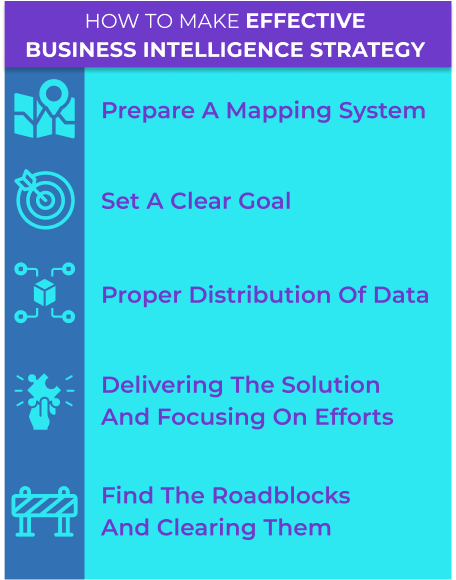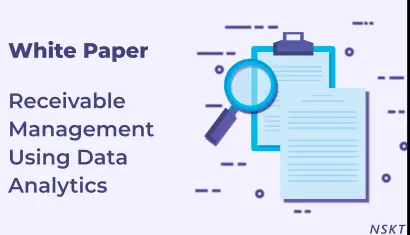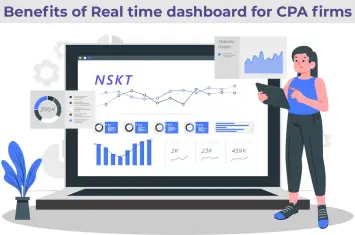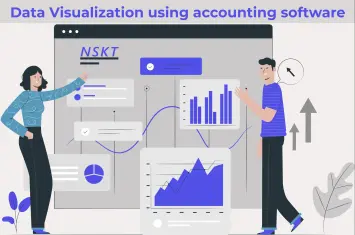Table of Contents
What is business intelligence and why is it needed in the present times?
In order to help companies, make more data-driven decisions, Data analytics and business intelligence incorporate business analytics, data mining, data visualization, data resources and infrastructure, and best practices. In reality, when you have a holistic understanding of the organization's data and use the data to accelerate improvement, remove inefficiencies, and rapidly respond to demand or supply changes, you realize you have modern business intelligence.
By showing current and past evidence within their market background, business intelligence can help enterprises make smarter decisions. To make the enterprise run faster and more effectively, Business intelligence analysts will use BI tools to include success and competitor benchmarks. In order to boost sales or revenue, business intelligence analysts can often more quickly spot industry patterns. Using reliably, from enforcement to recruiting campaigns, the right data will assist with everything.
Data analytics and business intelligence can help businesses make more informed, data-driven choices in a few ways:
-
- Identify opportunities to raise profits
- Analyze customer behavior
- Compare details with rivals
- Watch efficiency
- Optimize practices
- Predict achievement
- Trends on the Spot Market
- Discover challenges or concerns
Tips to make effective business intelligence strategies
Prepare a mapping system: You must first find yourself on the map in order to see where to go. You probably already have some sort of scheduled reports, digging down into your results, figuring out what's in your records, and maybe even visualizing it to some degree. Still, as you can see from a map, there is so much more you can do... and with the right business analytics approach, it's easy to get there.
Set a goal: You will need to prepare your organizational target at this point. It may feel oxymoronic, but the more focused you are on preparing your company plans, the better off you will be, with so much data out there. Essentially, a business question or a business requirement must be answered by the results. You can raise questions such as: Are we going to meet our targets before the end of the year with the aim of getting to the end of the chart with predictive and prescriptive analytics? What is the category we should concentrate on in the market? Based on our historical results, is there a package of items we can suggest? What are the key contributors to the end of a deal? And is there a collection of separate elements that we can combine and/or adopt in order to have a larger business impact?
Distribution of the data:
- A Decentral Solution: Many companies inspire their end-users with digital dashboards. This is where it falls into play with the word citizen data scientist. There is no need for citizen data scientists to be data scientists, they just need to know their way around the data, and that starts by allowing them access to more than just a dashboard. These are the workers you'd expect consumers of influence. They are the ones who in the department identify what is needed and need the insights to make choices. Through IT and data teams, this situation will open up bottlenecks in major corporate organizations, encouraging divisions to perform a lot of data processing on their own.
- A Centralized Approach: On the other side, we have organizations who have chosen to be in sole charge of the distributed data, and who sees what they can touch, and how much of it. The BI plan takes the confidential details, large delivery networks, and the need for proper governance into account in order to reach one interpretation of the facts. Building from this approach, business intelligence analysts give dashboards to their clients, but it does not allow them the option to operate on the data models directly. There is a small amount of drill-down that can be done by each client to see further information, but the data is purely controlled by the level of the device, object level, data level, and protection at the row level.
Delivering the solution (and focus your efforts): You may think it's too early to think about it, but how you're going to deliver the solution to your end-users, or your entire business, must be part of your BI strategy.
The decision on how you can exchange data will inevitably come with some of this. For eg, you would need to put more time into preparation and reporting for a centralized approach (where the user has little space for adjustments). You may want to do quick update loops with a decentralized approach, asking for input on each release, and then integrating that feedback into the next version.
Find (and pass-through) the roadblocks: Now that you have a good understanding of what kind of questions you need to ask, and what kind of facts you need to justify that, in this case, you will now need to consider who the gatekeepers are. In this case, the gatekeeper is essentially who or what is standing in the way between you and the details. Your records may be kept in a database or may even be stored by a third-party seller. If you outsource HR services to a firm that maintains the recruiting pipeline, or if you have cloud-based service providers such as Marketo to handle financial services marketing campaigns or Quickbooks, you will need to prepare how to link to their data and think about their framework in order to use it properly.

Conclusion
In line with market needs and technologies, data analytics and business intelligence are continuously changing, so we recognize emerging trends every year and keep consumers up-to-date on developments. Realize that it will continue to expand in artificial intelligence and machine learning, and organizations should incorporate AI insights into a larger BI strategy. As organizations aspire to be more data-driven, data storage and cooperation activities will grow. To work seamlessly across teams and agencies, data visualization would be much more important.
NSKT Global provides best data analytics and business intelligence services across the globe including UAE and USA.







